In order to clean the teeth effectively, you have to thoroughly remove the dental plaque that adheres on the tooth surfaces, false teeth and orthodontic appliances. The accumulation of plaque will cause tooth decay and gum disease.
Toothbrushing can remove dental plaque on tooth surfaces. We should brush our teeth in the morning and before bed at night every day. Thorough removal of plaque can prevent Periodontal Disease.
The toothbrush head should be placed with the tips of the bristles tilted at an angle towards the gingival sulcus which is located at the gingival margin, and where plaque tends to accumulate.
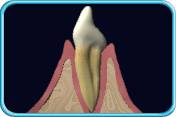 Dental plaque accumulates in the sulcus
Dental plaque accumulates in the sulcus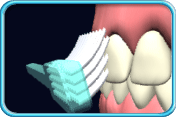 Place the tips of the bristles tilted at an angle towards the gingival margin
Place the tips of the bristles tilted at an angle towards the gingival margin
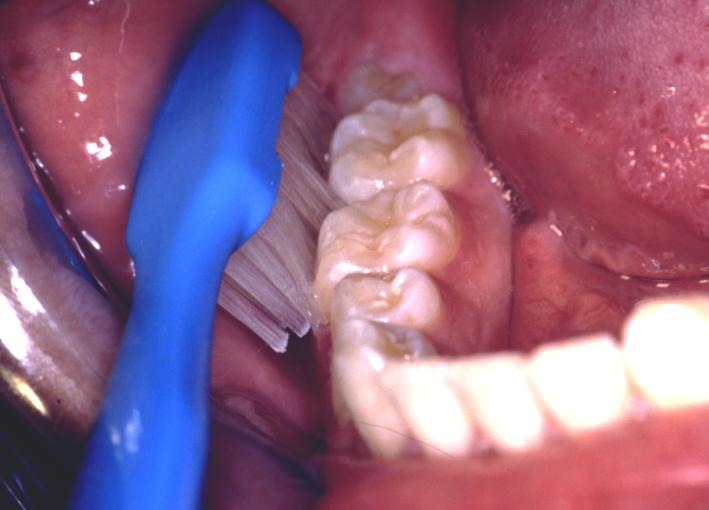 |
|
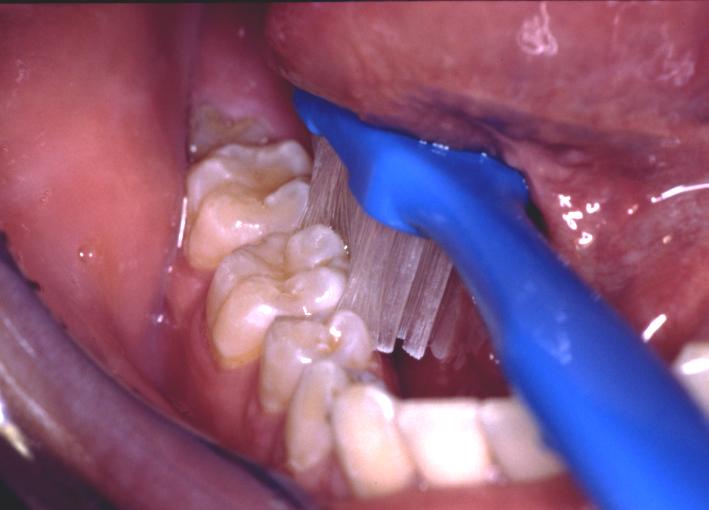 |
|
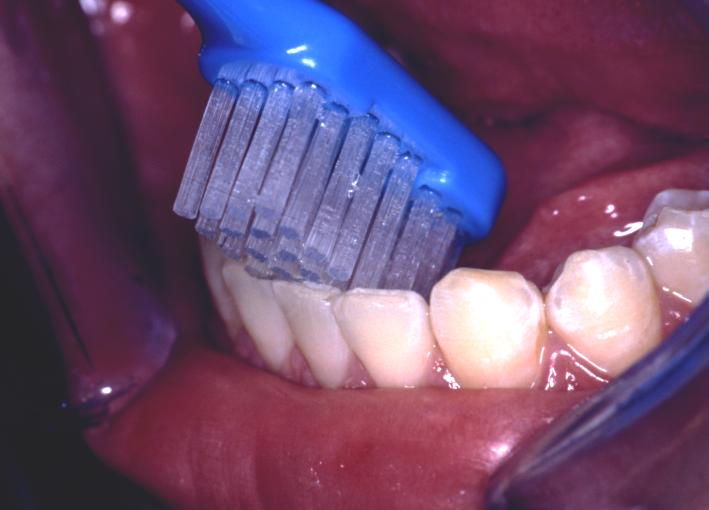 |
|
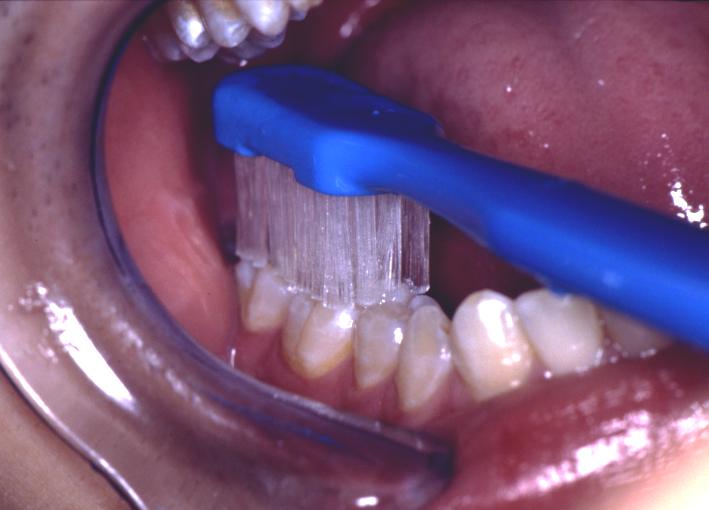 |
|
|
Video display: Toothbrushing Method
Areas that are hard to be reached by a toothbrush are difficult to be cleaned by toothbrushing, for example, the inner surfaces of lower teeth or crooked teeth. The solution is to clean with a small head toothbrush or a single-tuft toothbrush.
Some people may gag when they brush their teeth. To improve this situation, you can choose to use a toothbrush with a small head.
The accumulation of dental plaque causes gingival inflammation. In that case, the gum will bleed when brushing. You can choose to use a toothbrush with soft bristles to clean away the plaque in such areas. Gingival inflammation will slowly subside and the gingivae will become healthy when the oral hygiene has improved.